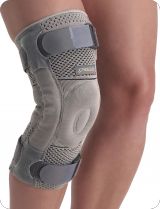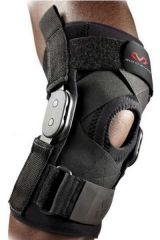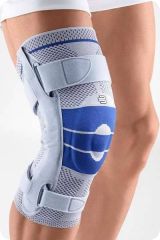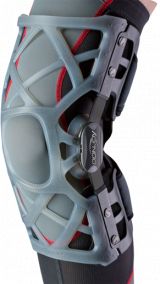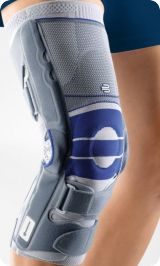Ostearthritis in knee patella
Suffering from Osteoarthritis in your knee? If so, then we have the best support products for sale to help you with your disorder. Prefer additional information? Feel free to read on, we're more than happy to explain it to you.
Read more »
Which brace is best for you?
For your convenience we use 3 protection levels, that way you will always pick the right brace.
Level 1: Is colored green, and stands for Basic protection.
Level 2: Is colored orange, and stands for Advanced protection.
Level 3: Is colored red, and stands for Highest protection.
What does Osteoarthritis in your knee mean?
Osteoarthritis is a disorder that affects your knee joint. The knee consists out of two large bones, covered with cartilage. Cartilage absorbs shocks when walking or jumping and ensures that you remain flexible. In addition, your knee joint is surrounded by the joint capsule and ligaments. On the inside of the knee joint capsule there's a mucous membrane layer that functions as a lubricant for the knee joint. When suffering from osteoarthritis, the cartilage layer decreases and become thinner. The causes of osteoarthritis are unclear.
Factors that play a role in the development of Osteoarthritis.
Obesitas, old age, heavy physical work, sports injuries or hereditary. Osteoarthritis is more common among women than it is among men.
Which complaints are experienced when suffering from Osteoarthritis in your knee?
Complaints such as pain in the knee, stiffness and reduced mobility. Sometimes, abnormalities compatible with osteoarthritis can be seen on an X-ray, eventhough there's no pain felt in the knee joint. Pain is the most important symptom for most people. This pain mainly occurs when you start moving. When osteoarthritis has progressed, resting pains will occur more often. When you're suffering from osteoarthritis in your knee, the pain is usually felt in and around the knee, but in the most severe cases, it can also be felt in your hip. The occurring stiffness usually disappears after a few minutes of exercise. As a result of knee osteoarthritis, you will be less able to walk, climb a staircase, sit down or stand up and put your socks and shoes on. Osteoarthritis often leads to less general exercise, which reduces muscle strength and fitness.
What to do?
The most important thing is to keep moving to strengthen your muscles and improve or maintain your stamina. In order to achieve this goal, you will do good to exercise moderately intensive for a minimum of half an hour, five days a week. Moderately intensive means that your heart rate will go up a little and you will start to breathe faster than usual. You will start to feel warm, but not out of breath and you're able to hold a conversation. You can get this physical exercise from walking to a store, cycling through the town, taking the stairs instead of the elevator or going for a swim.
Tips for moving while suffering from knee osteoarthritis
- Try to walk for a minimum of half an hour every day.
- Prevent overuse of the knee joint.
- Take sufficient rest in between your exercises.
- Try to extend your exercises every day.
- Wear the correct shoes with shock absorbing insoles.
- Wear a knee support to help with additional support.


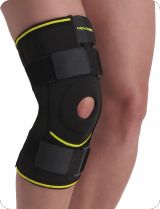
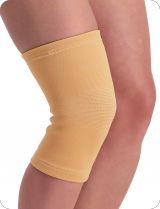
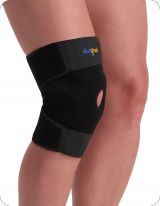
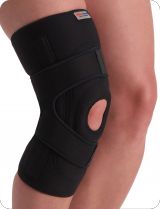
_160_258_80_ffffff_all_10.jpg)

